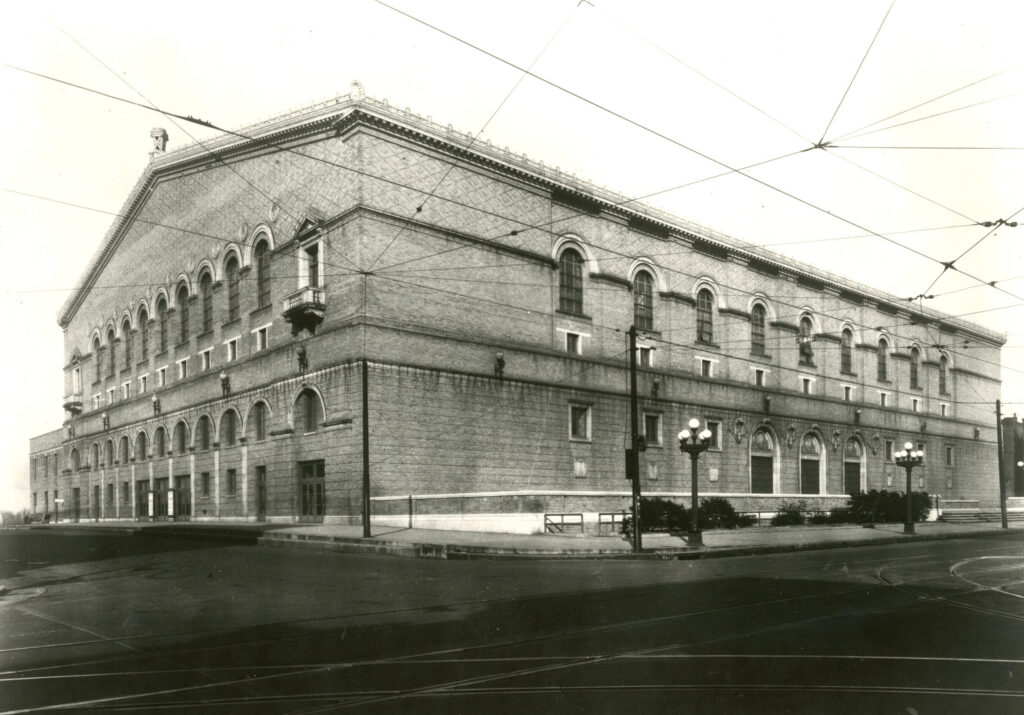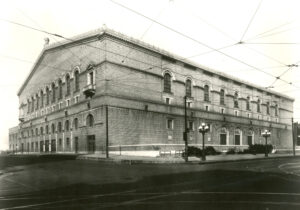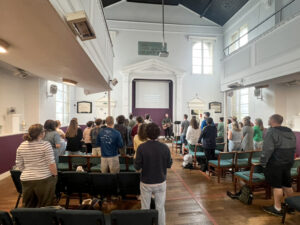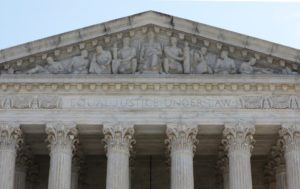
Editor’s note: This piece is the first in a five-part series leading up to the celebration of the 100th anniversary of the Baptist Faith and Message at the 2025 SBC Annual Meeting in Dallas.
Nearly a century has passed since the Southern Baptist Convention adopted the Baptist Faith and Message (BF&M) in May of 1925. Its debate and adoption was the most passionate, time-consuming issue of that year’s SBC meeting in Memphis. By comparison there was relatively little debate and far less media coverage of the adoption of what became the Cooperative Program at the same convention.
Baptist confessions of faith were created to define and state beliefs of Baptists for the purpose of fellowship and communion between churches and other bodies. Second, many were prepared as a defense of Baptist faith against political, religious or cultural persecution. In this centennial year, a look back at the journey leading to the adoption of the BF&M may spark renewed appreciation of its value.
There were various Baptist confessions of faith dating back generations, but when the SBC organized in 1845, it did not adopt a confession, saying: “We have constructed for our basis no new creed; acting in this matter upon a Baptist aversion for all creeds but the Bible.”
Nor had the SBC’s predecessor, the Triennial Baptist Convention, adopt one when it organized in 1814. It would be 80 years before the SBC, at a moment when it was struggling to both define and defend the faith, adopted a confession.
Anabaptists had produced various statements of faith in the 1500s. These typically were more specific in spelling out the expectations of daily conduct of the believer. Consequently, they were often longer than later confessions.
Early English Baptists, suffering persecution and imprisonment, were driven to compose confessions of faith in the early 1600s. Their goal was to identify other believers of like faith and order outside England. Some Baptists had already fled England, and others were seeking refuge abroad in communities with likeminded believers. Persecution drove their efforts to define their beliefs.
Soon, the political and religious landscape of England changed. During the English Civil War (1641-1661), Puritan Separatists (those who had “separated” from the Church of England) helped overthrow the English crown and establish a new government. Eventually a compromise was made to restore the crown with a Protestant monarch while providing limited religious liberty to separatist groups, including Baptists, in Great Britain.
During this era, a group who identified as “Baptists” had a developed a reputation for being radicals. In response, members of the London Baptist Association prepared a confession of faith to distinguish themselves from the radicals. It was a defense of their orthodoxy presented to the Anglican Church to allow them to continue worshipping. It was called, “The London Confession of Faith” (1644) which became the working model for confessions that followed.
An English law, which eventually granted increased religious freedom, was called the “Act of Toleration” (1689). It provided limited religious freedoms under the governance of the Anglican Church. It licensed locations of worship, and candidates for ordination had to be approved by an Anglican minister to ensure the sect’s theology was not heretical. The London Confession of 1688 was an attempt to respond to pending religious freedoms by defining and defending Baptist doctrine.
The Act of Toleration also applied to separatists in England’s colonies in America. The 1688 London Confession was a model for early American confessions, including the Philadelphia 1742 and Charleston 1751. Those confessions helped define Baptist beliefs to the Anglican Church in the American colonies.
Confessions of faith formed a core for the development of written Baptist systematic theology in the 18th and 19th centuries. In the early 1800s, new Baptist institutions of higher education further drove the study and writing of Baptist theology through the 19th and early 20th centuries. One consequence of this was associations, churches, conventions, schools and agencies each adhering to different statements of faith. Furthermore, it was not uncommon for each body to edit wording or add new articles to existing confessions when adopted. The result was multiple iterations of the original confessions.
In 1923, three different SBC entities were operating under three different statements of faith. The Southern Baptist Theological Seminary adhered to the Abstract of Principles, adopted in 1858. Southwestern Baptist Theological Seminary, whose ownership was transferred to the SBC in 1923, had adopted the 1858 New Hampshire Confession of Faith. Finally, the Foreign Mission Board adopted a statement of faith in 1919 which it had requested Dr. E. Y. Mullins to prepare. This lack of uniformity was one of the factors which led to the action taken by the SBC in 1924 calling for the preparation and adoption of a new confession of faith.
There were other major drivers behind the timing and adoption of the BFM in 1925 which this series will explore in future columns, including responding to the Modernist/Fundamentalist Controversy, Creationism and the pending Scopes Trial. But the need for a single unified statement that would define Southern Baptist beliefs and stand as a defense of those beliefs in the face of political or cultural opposition had become apparent. The adoption of the Baptist Faith and Message met that need and continues to serve that purpose today.





















